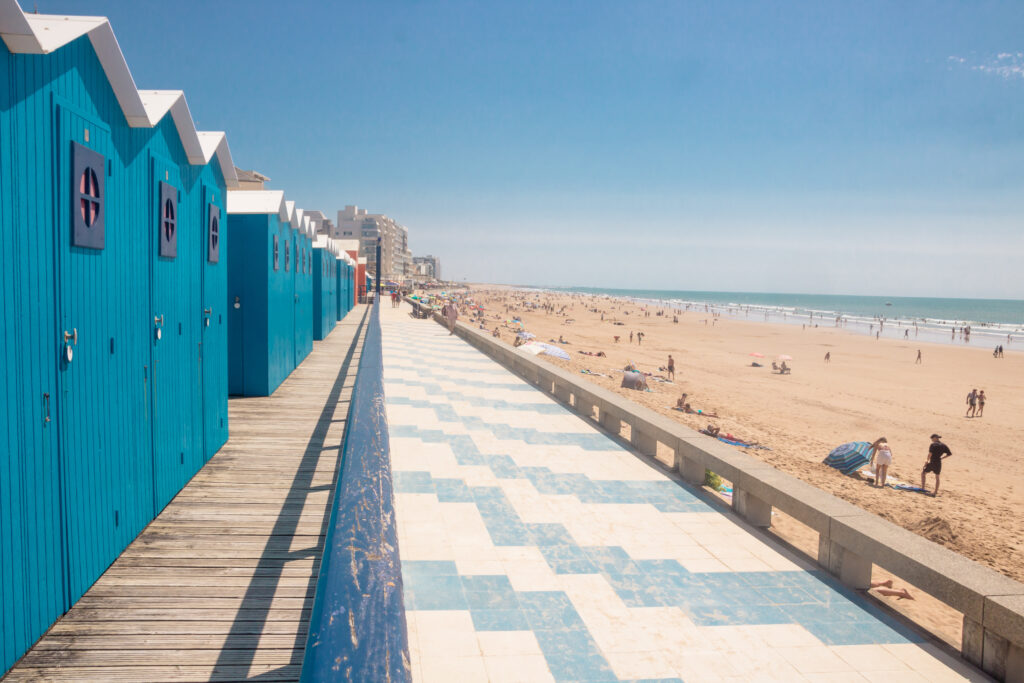
Nestling in the heart of the historic province of Poitou, the Vendée department also boasts a superb Atlantic coastline. The possibilities are endless, from long sandy beaches to mysterious and fascinating marshes. The scenery here is breathtaking, and there are plenty of places to stay. Île-d'Yeu and Île de Noirmoutier are also must-sees on a Vendée getaway. Here's a closer look at the must-sees in a department with so much to offer!
1. Noirmoutier, a charming island
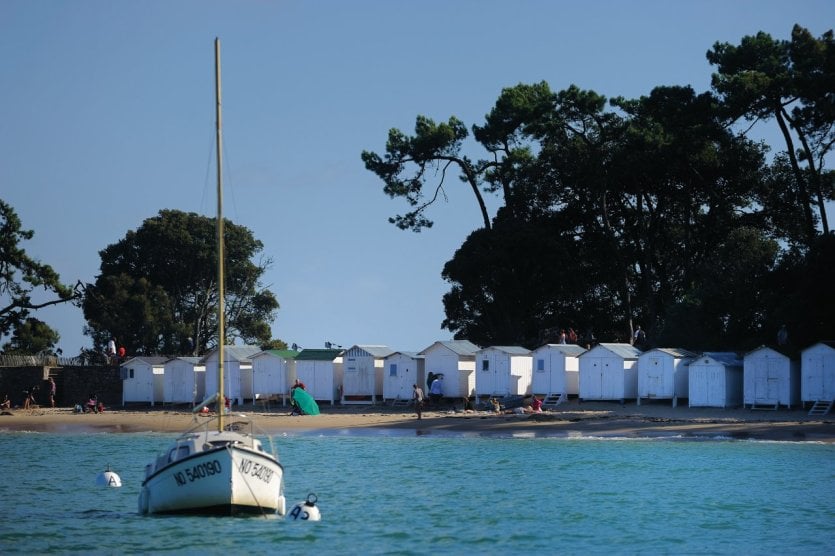
jS EVRARD
Noirmoutier is a charming island. It has the charm of its authenticity and its landscapes will win you over. It has more than 40 km of gently sloping fine sandy beaches: ideal with children! In the north of the island, the landscape is somewhat different, with small coves and a slightly rockier environment. From north to south, facing the open Atlantic, there are only dunes and beaches bordered by immense pine trees. The best-known site is, of course, the Bois de la Chaize and its famous mimosas, but there are also holm oaks, maritime pines and arbutus trees at Noirmoutier-en-l'Île. And everywhere, villas built at the end of the 19thcentury , most of which belonged to the Nantes bourgeoisie, display their sophisticated roofs, bright colours and elaborate facades. The Souzeaux and Dames beaches have also retained the retro charm of turn-of-the-century resorts.
Read more: What to do on the island of Noirmoutier? The 13 must-sees
2. The Passage du Gois, a natural site unique in Europe
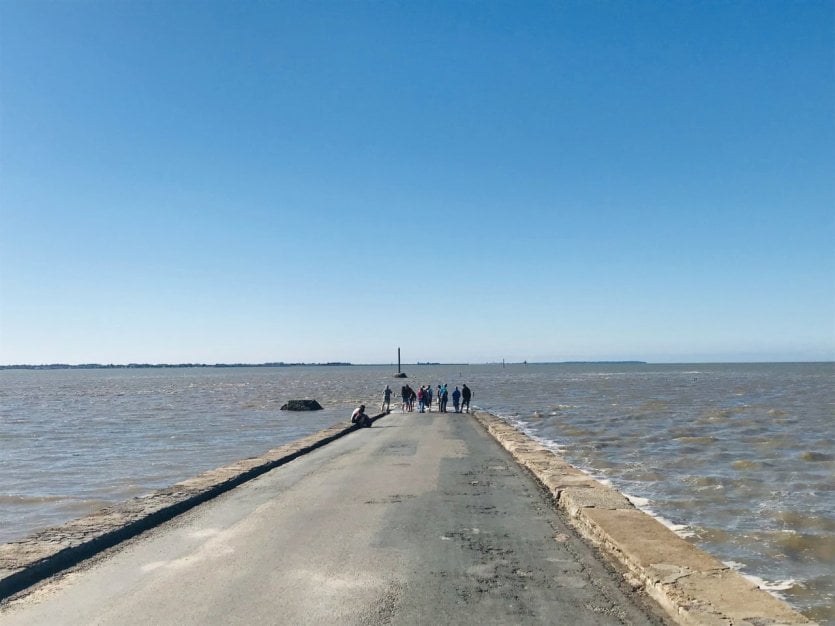
linda CASTAGNIE
In Noirmoutier, the famous Passage du Gois is a must-see. The Gois is a natural site that is unique in Europe and one of the sites of national interest and heritage recognised by UNESCO. But what is the Gois? It's a road under the sea, built in the 18th century and only accessible at low tide. It links the island of Noirmoutier to the mainland via the commune of Beauvoir-sur-Mer. Although the current crossing is relatively recent, communications between the island and the mainland have been possible for centuries. Today, with the exception of a few places, the Gois is mainly the same as it was in the 19th century.
It is important to note that you can cross the Gois on foot or by car from 1? hours before low tide until 1? hours after low tide.
3. Le Puy du Fou, a must-see in the Vendée
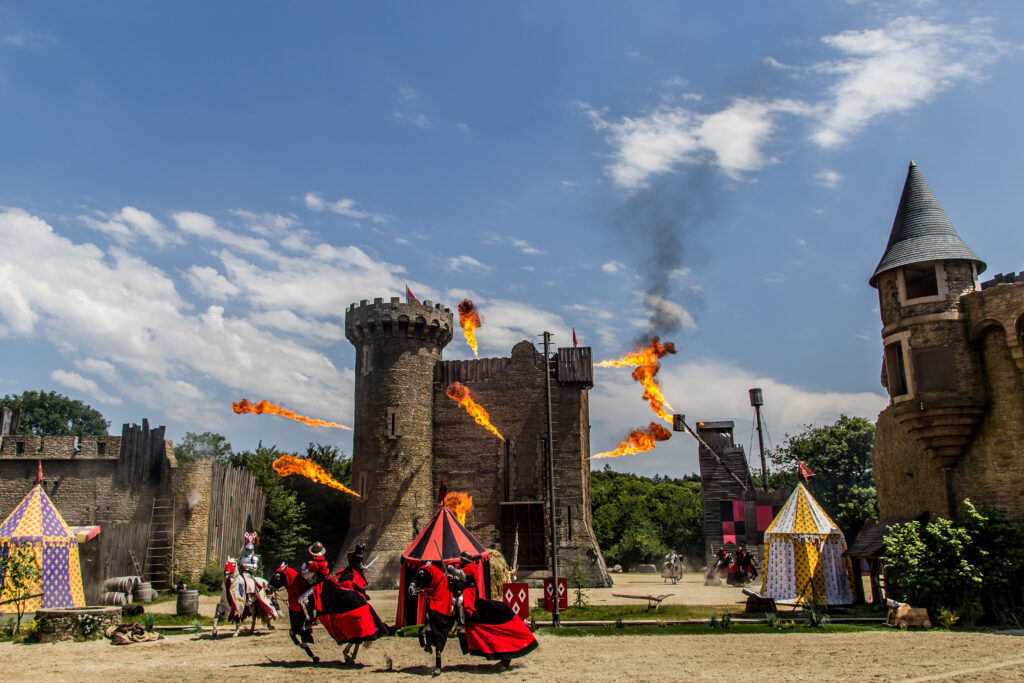
How can you come to the Vendée without visiting the Puy du Fou? Located in the magnificent Vendée bocage, between the towns of La Roche-sur-Yon and Cholet, it has twice been voted "Best park in the world ". With the Puy du Fou, a theme park unique in France, the Vendée has thought big. Unlike traditional theme parks, the Puy du Fou offers a real immersion in history and culture through grandiose shows retracing different eras, from Roman Antiquity to the Middle Ages and the Renaissance. Visitors embark on a real journey through time, with impressive staging, talented actors, spectacular special effects and sumptuous sets. A must-see for history buffs and families alike, the Puy du Fou offers an experience that is both educational and captivating, which explains the park's success for over 40 years.
Read more about organising your trip: Tips and tricks for organising your day at the Puy du Fou
Tempted by a visit to this unforgettable park? Take advantage of our partner's rates and book your entry tickets in just a few clicks here!
4. Cycling in the Marais Poitevin
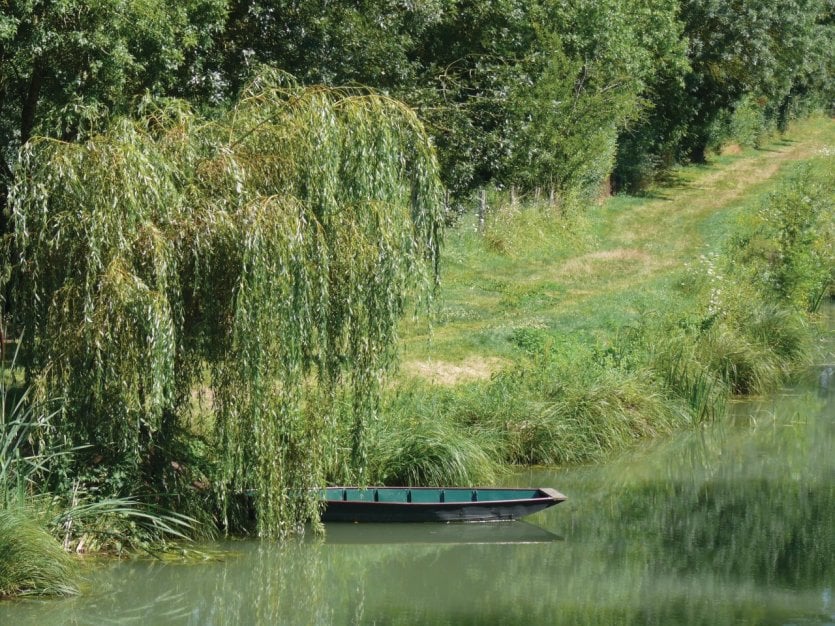
droopy7 - Fotolia
The Marais Poitevin, a Grand Site de France, is the second largest wetland area in France after the Camargue. It covers an area of 96,000 hectares, mainly consisting of drained marshland used for fodder farming. It covers three départements: Vendée, Deux-Sèvres and Charente-Maritime. In the Vendée, there are two distinct aspects to the Marais Poitevin: dry marshland and flooded marshland. While the former covers the area around the Bay of L'Aiguillon, the latter lies further east. This is the part of the marsh that is subject to flooding and is known by the gentle name of Venise verte. It is characterised by its many tree-lined canals, which offer a picturesque landscape much appreciated by visiting tourists, who are delighted to treat themselves to a traditional boat trip or a cycling excursion.
Read more: Top 11 of the most beautiful walks to do in the Vendée
5. Ile d'Yeu, a real treasure to visit in the Vendée
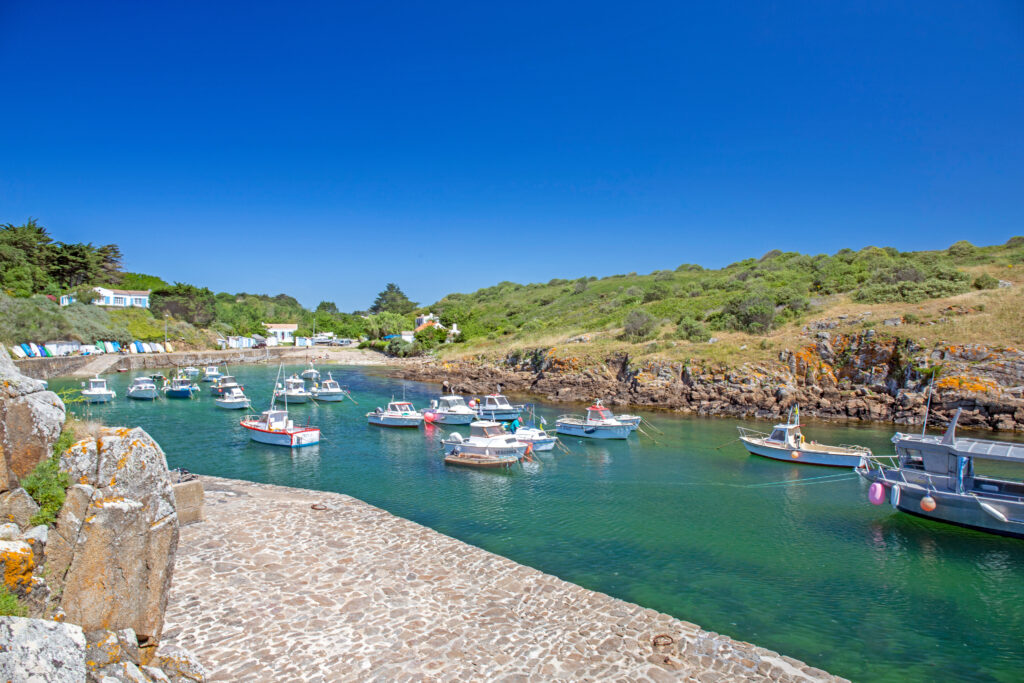
Located off the coast of the Vendée, L'Île-d'Yeu is a real treasure trove. One of the island's most remarkable historical relics is undoubtedly the Vieux-Château, standing majestically above the ocean. And the traditional architecture of L'Île-D'Yeu, with its dazzling white, whitewashed facades and half-round tiled roofs, is a delight. The island itself has two radically different faces. The wild coastline borders the ocean, offering undeniably the most beautiful coastline in the département. Facing south-west, it is made up of rocks and steep cliffs sheltering charming little coves. The other side, facing the mainland to the north-east, is more peaceful, with gentle beaches, dunes and pine forests, and is home to the island's main town, Port-Joinville.
To find out more, read our article What to do and see on the Ile d'Yeu? The 10 must-sees.
6. What to do in the Vendée Enjoy the beach in Les Sables-d'Olonne
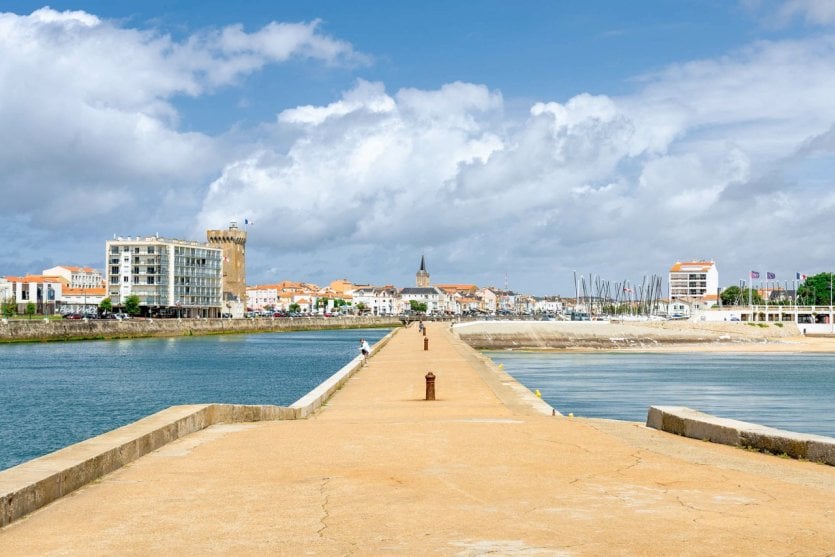
Les Sables-d?Olonne© Philippe- Adobe Stock
Les Sables-d'Olonne is a well-known bay for sailing and yachting enthusiasts. As well as the opportunities it offers, it is also the starting point for the most legendary race on the planet: the famous and merciless Vendée Globe. The Vendée town also offers a privileged natural setting, with marshes, dunes, forests and superb beaches. In Les Sables-d'Olonne, you'll be spoilt for choice when it comes to finding a beach where you can lay down your towel for a lazy session. Between the wild and pretty beaches of Olonne-sur-Mer or the more "urban" La Chaume, the 3km long, south-facing, fine sandy beach that runs along the embankment, there's plenty to do! And the large beach is located at the foot of the shops on the embankment, mainly restaurants and bars, and offers activities for children with a few beach clubs. In all, the bay of Les Sables-d'Olonne offers 25 km of coastline.
Read more: What to do in Les Sables-d'Olonne? The 17 must-sees
7. La Tranche-sur-Mer
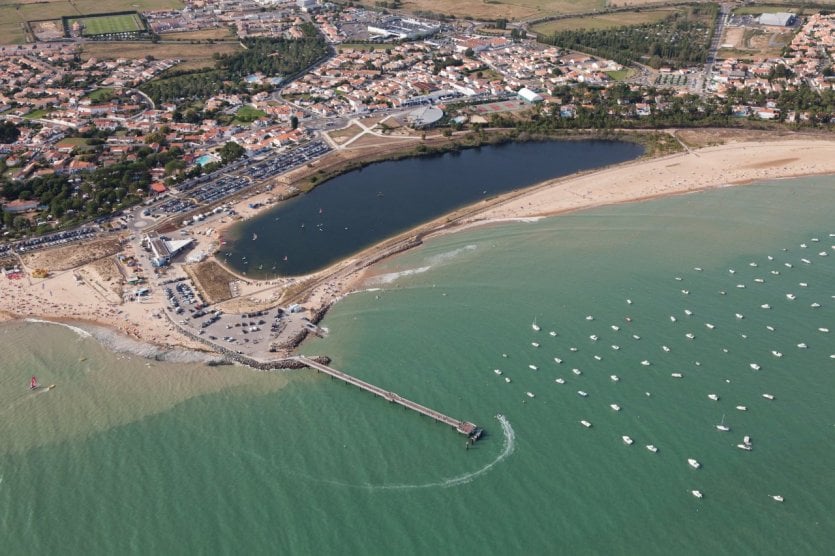
mairie La Tranche-sur-Mer
Situated in the south of the Vendée department, the commune of La Tranche-sur-Mer, with its typical marshland architecture, offers some great relaxing breaks. Not least thanks to the peaceful Anse de Maupas, with its 13 kilometres of fine sandy beaches. These sandbanks, facing the Ile de Ré, invite you to relax and swim. Thanks to the excellent weather conditions, La Tranche is also a popular spot for windsurfing. The commune covers 1,363 hectares and offers a varied landscape of dunes and forests. Near the Groin-du-Cou headland, 440 hectares of holm oak and maritime pine provide welcome shade for walkers on the footpaths. Nearby, the Baie de L'Aiguillon, bird sanctuaries and the Marais Poitevin make for very pleasant walks.
Read more: What to do and see in La Tranche-sur-Mer The 10 must-sees
8. Saint-Gilles-Croix-de-Vie, a real invitation to relax
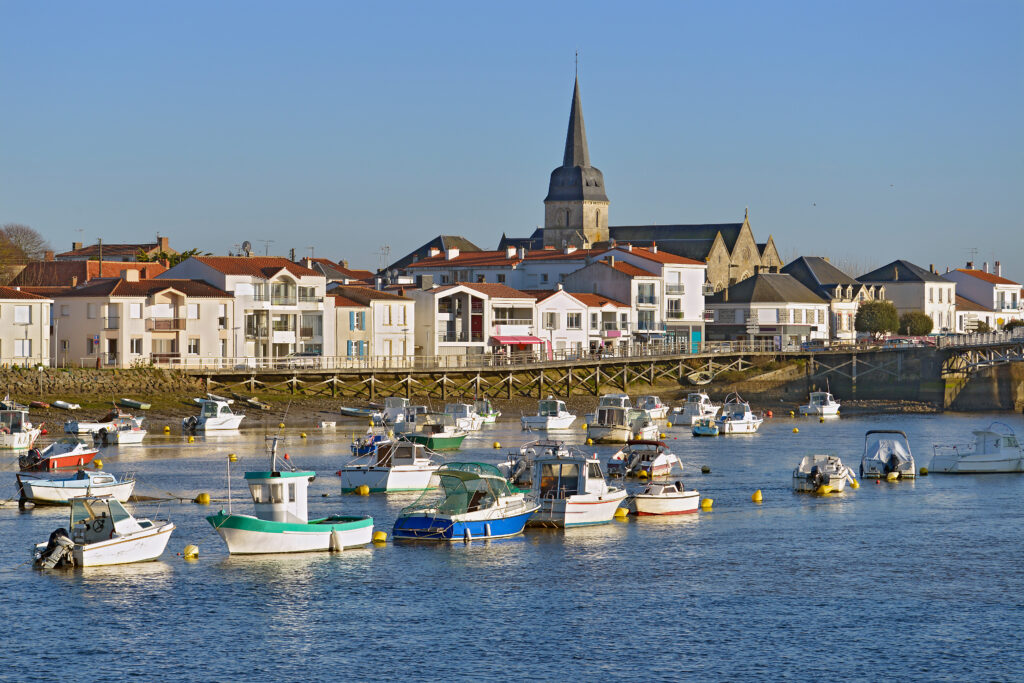
Nestling in the heart of the Vendée, on the splendid Côte de Lumière, Saint-Gilles-Croix-de-Vie is a real invitation to relax, whether for a spring weekend or a week's summer holiday. Its peaceful beaches invite you to laze around - it's hard to resist! Nearby, the port reveals its elegant boats, including Le Hope, a majestic old sailing ship steeped in history. As you stroll along, take in the authenticity of the canning factories and the craftsmanship for which the town is renowned. Saint-Gilles-Croix-de-Vie is one of the most important sardine fishing ports in France. In 2018, sardine fishing in Saint-Gilles-Croix-de-Vie was included in the inventory of intangible cultural heritage. L'Atelier de la Sardine is a museum that reveals everything about sardine fishing in the commune between the 17th century and the present day. It also features numerous testimonials from sailors, model boats and more.
Read more: What to see and do in Saint-Gilles-Croix-de-Vie? The 10 must-sees
9. Saint-Jean-de-Monts, one of the most popular seaside resorts in the Vendée
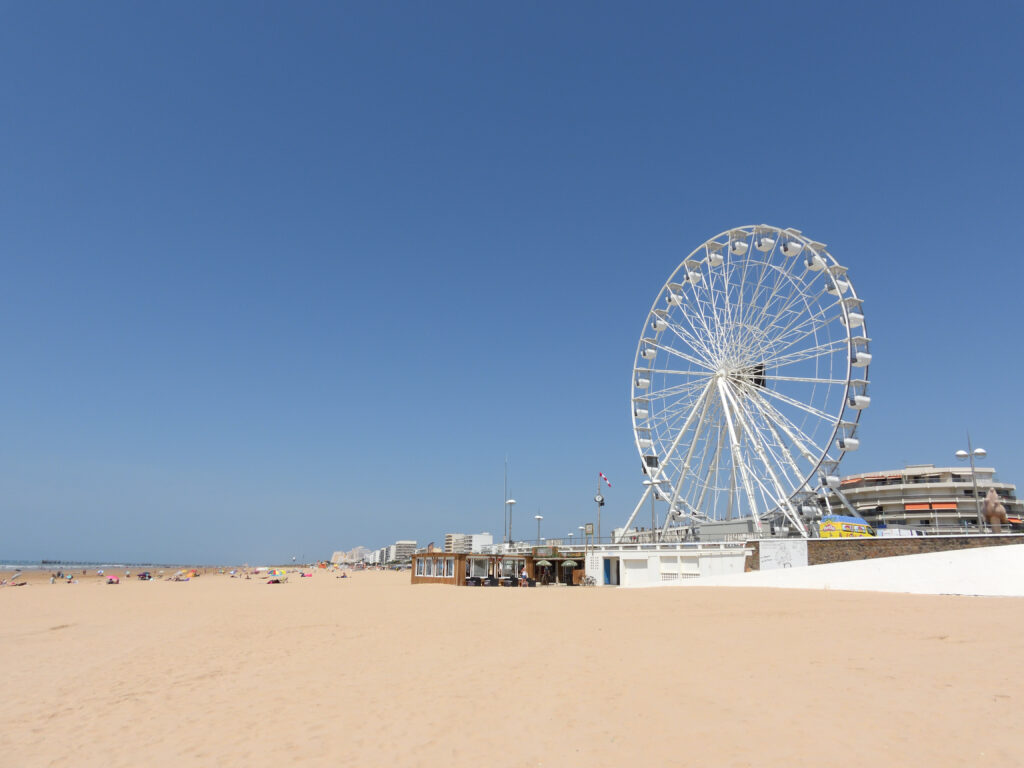
With its long sandy beach stretching for 8 kilometres and its many events and leisure activities from spring to autumn, Saint-Jean-de-Monts is one of the most popular seaside resorts in the Vendée. Originally, it was a small rural village grouped around its church and separated from the sea by a vast dune belt. However, from 1955 onwards, the resort underwent unbridled expansion. Saint-Jean-de-Monts is a great destination for sports enthusiasts. There's horse riding, tennis, golf, cycling, tree climbing, archery, kite flying, sand yachting, catamaran sailing, paddle boarding, kitesurfing and much more. And when you're in Saint-Jean-de-Monts, don't forget to visit the hinterland and the Marais Breton in Vendée.
Read more: What to do in Saint-Jean-de-Monts Top 11 must-sees
10. What to do in the Vendée Discover the Payré estuary
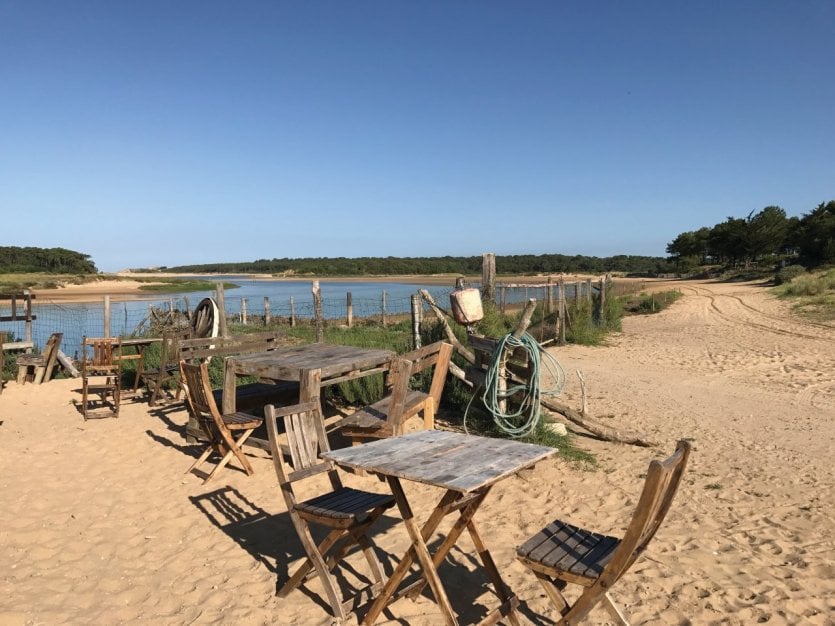
linda CASTAGNIE
Here's a must-see on a Vendée getaway! Classified as a Grand Ensemble Naturel and designated in 2007 as the department's first remarkable site, the Payré estuary is currently in the running to be awarded the Grand Site de France label. This five-kilometre stretch, located between the communes of Talmont-Saint-Hilaire and Saint-Vincent-sur-Jard, is simply sublime from the air! It's actually the mouth of the oyster-farming channel. Let's stop for a moment at the Pointe du Payré, located at the end of an oyster-farming passage. Covering an area of 50 hectares, this site is made up of cliffs, dunes and foreshores. A signposted trail allows you to discover the treasures of this place, between dunes and marshes, in the heart of the forest.
Read more: Top 11 of the most beautiful beaches in the Vendée
11. Tiffauges castle, an emblematic example of medieval military architecture
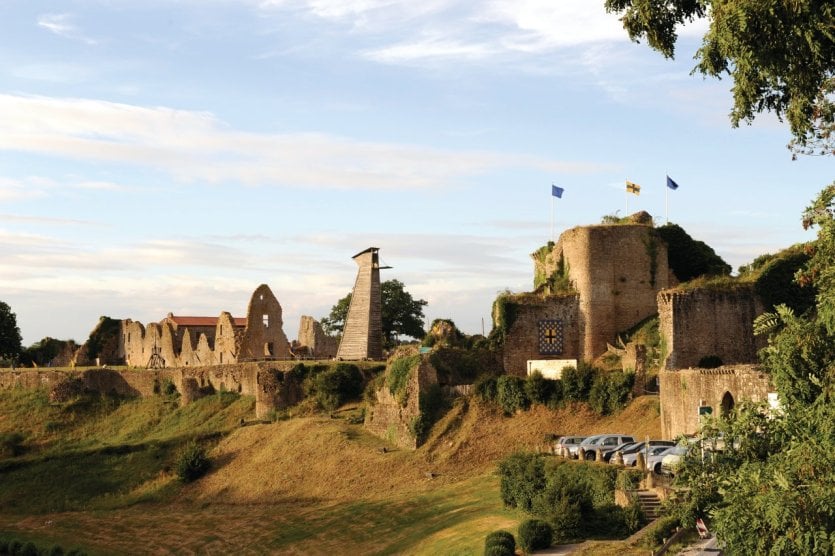
david Frugère
Tiffauges castle, a listed historic monument on the Maine-et-Loire border, was once the property of Gilles de Rais, Marshal of France and Joan of Arc's comrade-in-arms during the Hundred Years' War. It is an emblematic example of medieval military architecture. Perched on a rocky spur, in an exceptional setting overlooking the Sèvre nantaise, Tiffauges castle invites you to discover its astonishing conservatory of medieval war machines. In 1992, it became the first site in the world to offer live firing demonstrations using reconstructed medieval war machines.
Read more: Top 27 of the most beautiful châteaux to visit in France
12. What to do in the Vendée See Saint-Vincent abbey in Rives d'Autise
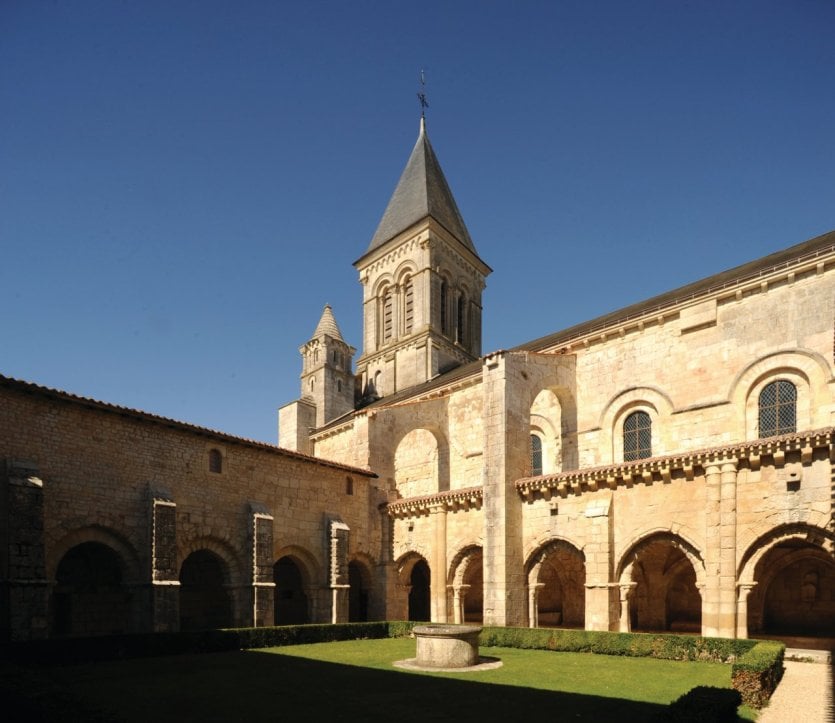
patrick Durandet
Formerly known as Nieul-sur-l'Autise, this charming little town in the south of the département on the edge of the Marais Poitevin has been awarded the "Petite Cité de caractère" label. It's well worth a visit, and has been occupied since Neolithic times. In the heart of the village of Rives d'Autise, don't miss a visit to Saint-Vincent Abbey, founded in 1067, which is a veritable jewel of Romanesque art. Listed as a historic monument, it is one of the few monastic complexes in the Romanesque Bas-Poitou to have preserved its abbey church, its cloister with its four galleries and its conventual buildings. In 1141, Eleanor of Aquitaine, then Queen of France, granted it the status of royal abbey. At the end of the visit, the Maison d'Aliénor and its museum exhibition plunge visitors into the heart of medieval monastic life.
Read more: Top 15 of the most beautiful abbeys to visit in France
13. La Roche-sur-Yon
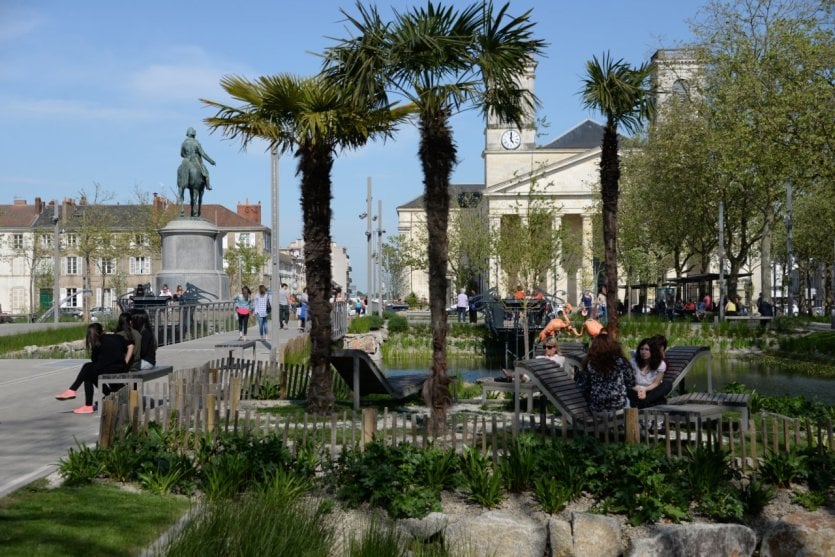
city of La Roche-sur-Yon - B. Bucher
Created in 1804 by Napoleon, La Roche-sur-Yon is regularly ranked as one of the country's most pleasant towns to live in. It is located in the heart of the département, less than 30 minutes from the beaches along the coast. La Roche-sur-Yon was first developed around its castle and the Vieille Horloge district. However, it was Napoleon's vision that gave the town its new face: a pentagonal shape, a checkerboard layout incorporating buildings inspired by the neoclassical style, and a stud farm that today perpetuates unique skills. Today, the Place Napoléon has been completely redesigned, with the addition of vegetation and ponds, and is home to strange creatures imagined by François Delarozière from the Nantes-based company La Machine. Unique mechanical animals!
Read more: What to do and see in and around La Roche sur Yon The 12 must-sees
How do I get to the Vendée?
Anything is possible to get to the Vendée. You can take the plane and land at La Rochelle-Île de Ré or Nantes-Atlantique airports, located around thirty minutes away by car. By train, head for the TGV stations at La Roche-sur-Yon and Les Sables-d'Olonne, or the TER stations at Saint-Gilles-Croix-De-Vie, Challans, Luçon and Montaigu. There are also 1,150 kilometres of cycle paths in the département.
Which is the most beautiful town in the Vendée?
Les Sables-d'Olonne is a must-visit on any stay in the Vendée. Well-known to sailing and adventure enthusiasts, the Vendée Globe town offers a superb natural setting, with marshes, dunes, forests and beaches.
What to do in the Vendée in August
The Vendée has a superb coastline on the Atlantic coast. In August, there are plenty of seaside resorts to choose from: Les Sables-d'Olonne, La Tranche-sur-Mer, Saint-Jean-de-Monts, the islands of Noirmoutier and Yeu- the options for putting down your towel and taking a dip seem endless...
If you're planning a holiday in the Vendée, make it easy for yourself by booking your next trip here:


